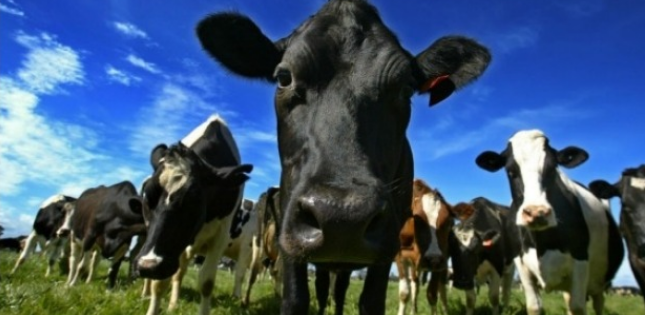Reliable as clockwork, and right on cue, DairyNZ – who pride themselves on speaking for the entire dairy industry – stepped up to the microphone and shot themselves in the head.
What I describe as their venomous little mission to nail Greenpeace for their highly-effective dirty dairying ad has ended as it should have. The judgement is in, and the Advertising Standards Authority ruled that it was not “factually incorrect and misleading,” as DairyNZ had claimed.
The ASA’s complaints board said the statements made in the ad “would not come as a surprise to most New Zealanders.” Indeed, they went further.
“We would encourage Dairy NZ to concentrate its resources into addressing the very real problems of river degradation, rather than trying to pretend the problem doesn’t exist.”
Yet such a bold slap did nothing to stop DairyNZ’s CEO Tim Mackle from spouting a
type of Groundhog Day line about that unquantified $1 billion that farmers have apparently spent on “cleaning up their act.” Fonterra use the same line too.
He then moved on to the standard misnomer of trying to convince Kiwis that waterways being fenced off is some sort of permanent salve. It’s helpful but only in relatively small way. You see, it’s not cows shitting in rivers that’s the biggest problem. It’s nitrates or nitrogen from all those millions of cow’s urine entering the soil and leaching into surface or groundwater. They don’t want you catching on to that fact.
So far, no amount of fencing and planting, or the quoting of debateable regional council statistics saying so, has managed to stave off further degradation of waterways.
To add to the problem, there is a lag effect. In other words, it will be a few years before we see the worst impacts of the last 15 years of massive dairy intensification.
Let’s look at DairyNZ in more depth. They talk a hell of a lot about dairy farmers’ environmental stewardship. So why is it that they won’t work with Fish & Game, and NGOs such as Forest & Bird, the Environmental Defence Society, and Greenpeace? Why not put their money where their mouth is and collaborate with them? I mean if they care about the environment so much, why wouldn’t they? Instead, they attack these organisations at every opportunity.
This Greenpeace decision has them fair frothing at the mouth. They’re livid, fuming, and they want to win. At all costs. So, they’re appealing the decision and I reckon they are highly likely to lose all over again.
Why risk losing their social licence to operate? Why play an “all or nothing” game with the public’s fast-waning patience?
Here’s a concrete example of what I see as their duplicity around what they say versus what they actually do. It speaks volumes about their intransigence, and their choice to be part of the problem instead of part of the solution.
Back in 2013, the Environmental Protection Agency’s Board of Inquiry was hearing evidence on the Ruataniwha Dam project, and the Hawke’s Bay Regional Council’s attempt at setting looser limits of allowable nitrogen leaching for land users in the Tukituki catchment via what is known as Plan Change 6.
Fighting to retain limits for ecosystem health were Forest and Bird, Fish & Game, and the Environmental Defence Society. Nitrogen is important because if there is too much in the river then its ecosystem directly suffers.
Primary production interest groups on the other hand, were advocating for 10 x worse nitrogen levels. They were pushing hard to take the Tukituki from ecological health to toxicity.
After a lengthy, complex, and expensive legal tussle, the Board of Inquiry backed the environmentalists.
Who were the agricultural groups? Federated Farmers, Fonterra, Horticulture NZ, IrrigationNZ and, you guessed it, DairyNZ.
It doesn’t stop there.
They backed toxicity again on the Canterbury Land and Water Plan by using that well-worn chestnut about dairy farmers “going broke” if limits are put on them. Have a look at the current toxic soup called the Selwyn River and I dare you to tell me they’re the good guys.
On DairyNZ’s website they’ve an entire section devoted to arguing that setting nutrient limits on the excessively degraded Waituna Lagoon in Southland – overwhelmingly due to intensive dairying – is just too hard economically on farmers. To date, the Southland Regional Council has not set any limits – on record as not wanting to upset the dairying milk cart.
It’s intricate but be assured of one thing. DairyNZ’s anti-nitrogen limits stance is black and white. They spend their dairy farmers’ levies battling against any constraints imposed on their industrial-level polluting. Which is entirely consistent with their failed complaint, and now appeal, against Greenpeace’s depiction of what Kiwis know to be true. Yet, in the midst of an environmental crisis, DairyNZ’s response is denial and aggression. It defies all rationality. Ultimately though, it won’t defy the gravity of public pressure.

